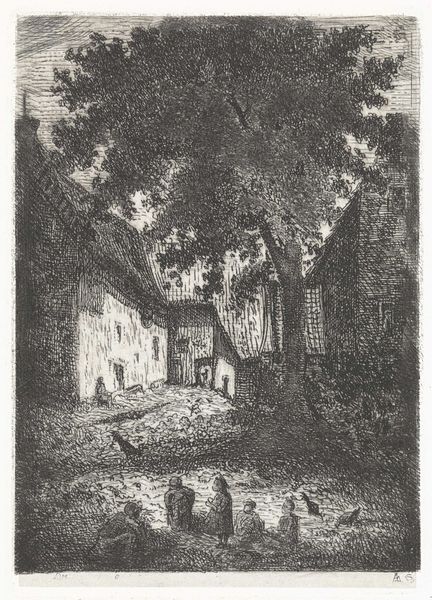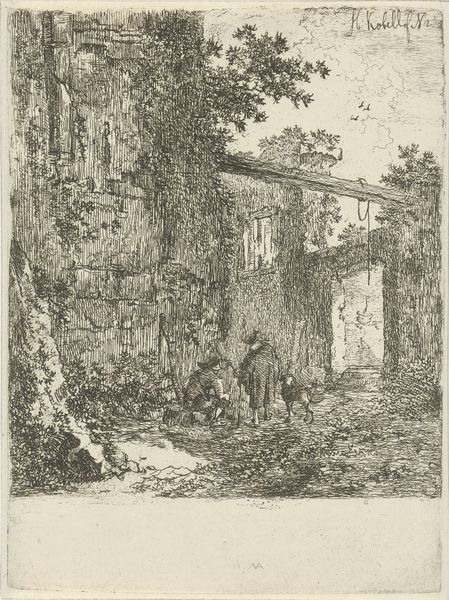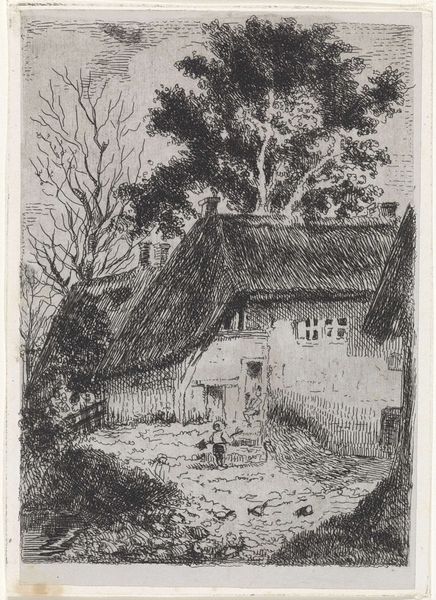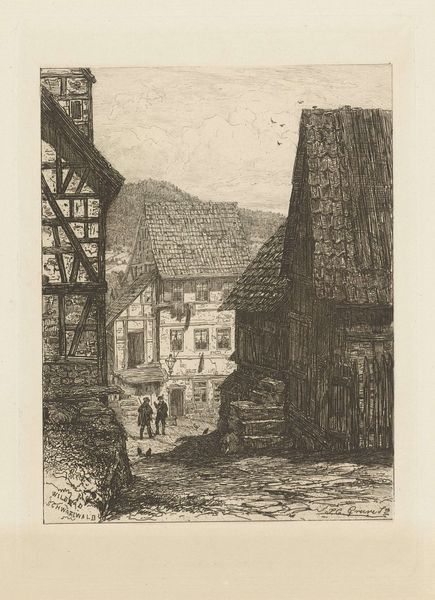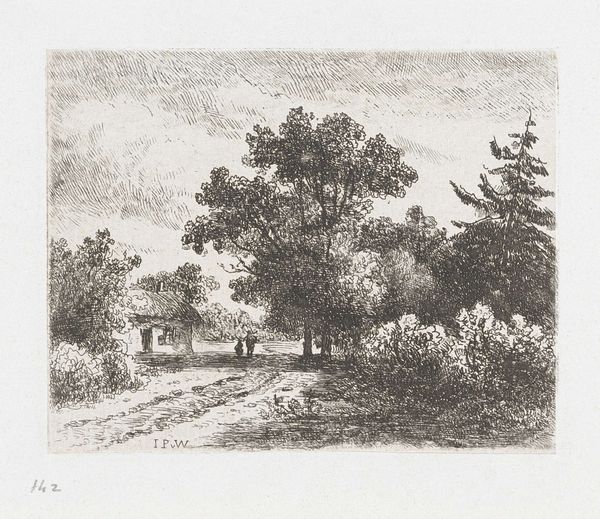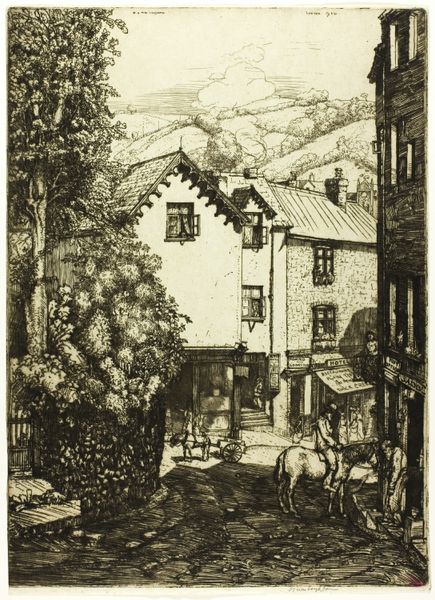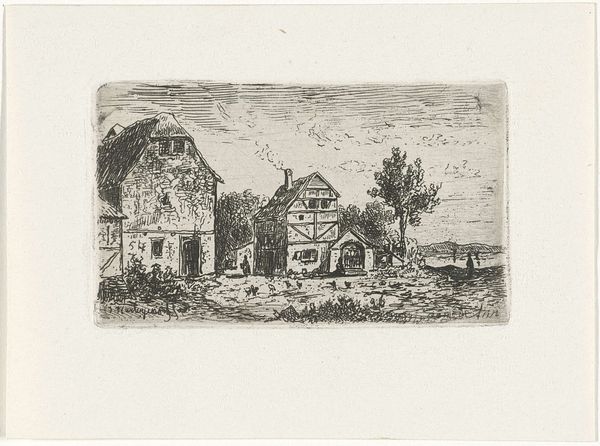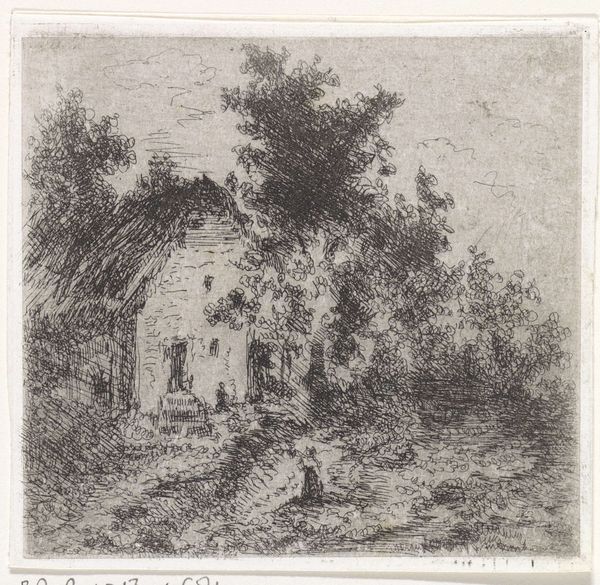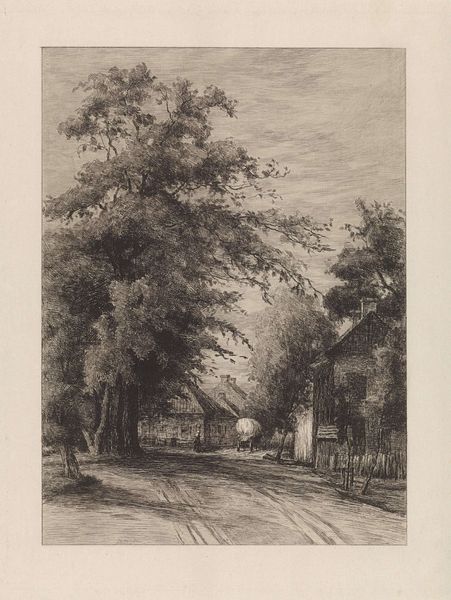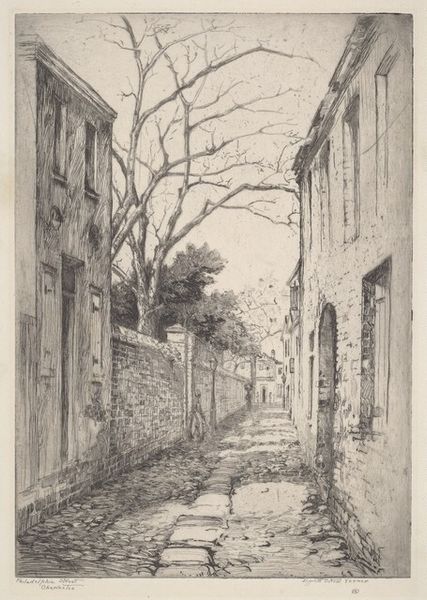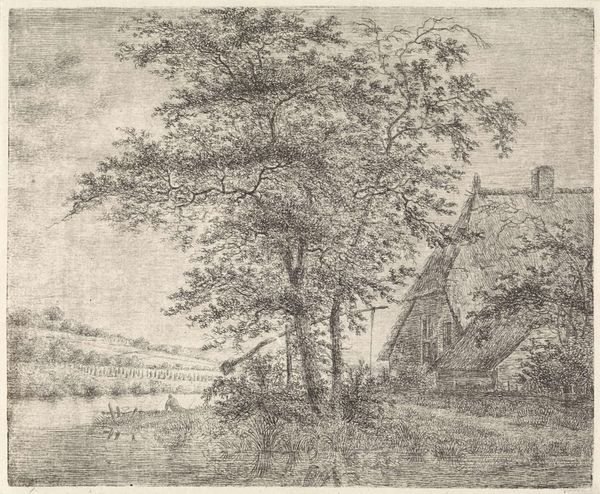
drawing, print, etching, pencil
#
pencil drawn
#
drawing
# print
#
etching
#
landscape
#
pencil drawing
#
pencil
#
genre-painting
#
realism
Dimensions: height 151 mm, width 109 mm
Copyright: Rijks Museum: Open Domain
Editor: This is "Spelende kinderen nabij dorpshuizen" by Arnoud Schaepkens, made sometime between 1831 and 1904, using drawing, print and etching techniques, mainly with pencil. It feels quite bucolic and perhaps a little sentimental. What can you tell me about this scene? Curator: This work, though seemingly a simple genre scene, speaks volumes about 19th-century societal structures. Notice how the children are positioned in the foreground, seemingly free to play. What socio-economic narratives do you think the artist may be subtly highlighting, or perhaps even obscuring? Editor: Hmm, it looks like everyday life for children near village homes. The attention seems to be focused on the activities, making it all appear very ordinary and even joyful. Curator: Exactly, and that’s the entry point. But consider this: who benefits from such portrayals of seemingly carefree rural life? How might this idealized depiction relate to larger conversations about land ownership, labor, and even childhood in a rapidly industrializing world? Were all children afforded this kind of leisure? Editor: I see what you mean. Perhaps it normalizes and obscures the realities of child labor and class differences in that era. This drawing almost romanticizes the lives of children. Curator: Precisely! And how might Schaepkens's own positionality have informed his perspective? Was he perhaps part of the land-owning class? Understanding his background helps us decode these layers of representation. What did you notice about the marks of the drawing and print? Editor: I was focused on the children playing. I appreciate how a historical view makes this art piece about childhood both familiar and a symbol of 19th-century life. Curator: Absolutely! Now you're seeing how art can reflect, and even shape, social and political discourse.
Comments
No comments
Be the first to comment and join the conversation on the ultimate creative platform.
